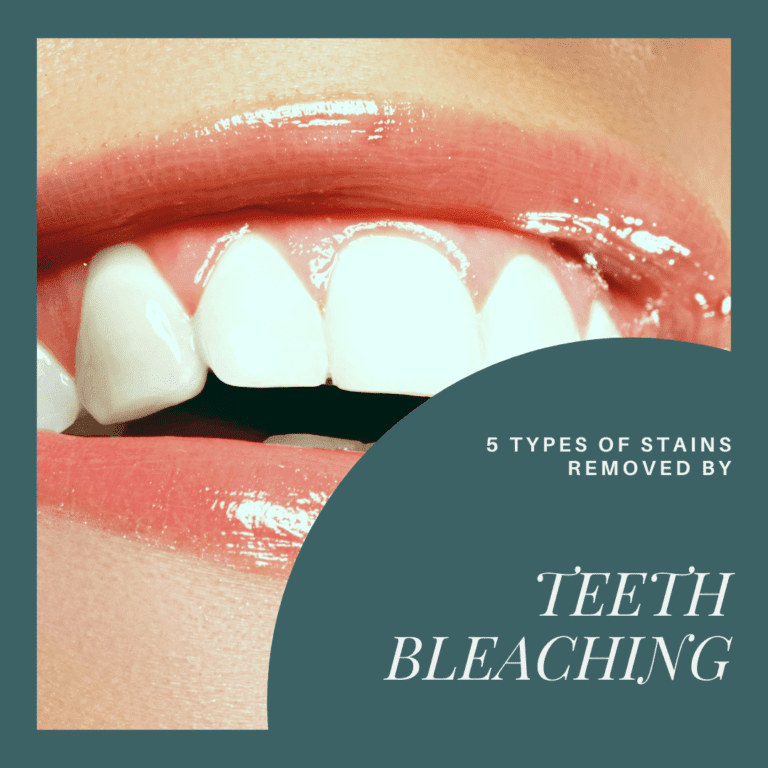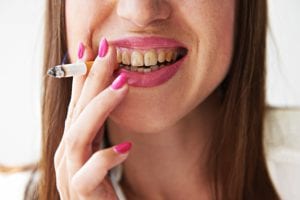5 Stains Removed by Teeth Bleaching

Teeth bleaching is one of the easiest ways to improve the look of your smile without having to undergo costly or complicated cosmetic dental procedures. Teeth bleaching, also known as teeth whitening, uses a hydrogen peroxide or carbamide peroxide whitening agent to break down the bonds of discolored molecules. Once these molecules are broken down, they are absorbed into the body, making your teeth appear whiter and brighter than before.
Because of the whitening agents used for teeth bleaching, this cosmetic procedure can remove a variety of different stains. There are two main types of stains that can cause teeth to appear discolored. The first are extrinsic stains, which are found on the enamel layer. The second are intrinsic stains, which are found in the dentin layer. Here are five extrinsic or intrinsic stains removed by teeth bleaching:

Foods & Beverages
The foods and beverages we consume can ultimately affect the color of our teeth. For example, coffee can make teeth appear yellow or light brown, while red wine can give them a reddish tint. These stains are considered to be extrinsic stains because they normally affect the enamel. Luckily stains from foods and beverages can easily be removed by teeth bleaching.
Medications
Certain medications, like antihistamines, antipsychotics, and those used for high blood pressure, can result in the darkening of the teeth. Antibiotics such as tetracycline and doxycycline can also cause tooth discoloration. Finally, chemotherapy and head/neck radiation can also cause stains. Depending on the exact cause of the stain, teeth bleaching procedures may be able to remove these discolorations.
Age
The enamel layer of teeth gets thinner with age and allows the yellow dentin layer to show through. This gives teeth an overall more yellow appearance. Professional teeth bleaching agents are able to brighten the both the enamel and dentin layer so that the teeth will appear less yellow and more white. Depending on the severity of the discoloration, however, additional cosmetic treatments may be required or recommended to achieve treatment goals.
Trauma
Teeth can also become discolored as a result of trauma. When trauma to the tooth occurs, the body’s natural response is to produce more dentin. Since dentin is yellow in color, the production of excess dentin causes the entire tooth to look yellow. Teeth bleaching can brighten the dentin layer and make the affected tooth look brighter overall.

Tobacco
Tobacco use can cause stains to develop on the tooth enamel. These extrinsic stains are most commonly caused by tar and nicotine. Tar is a dark color which can make the teeth look darker than natural. Nicotine changes to a yellow color when mixed with air, causing teeth to have a yellow tint. Both of these stains caused by tobacco can be removed during a teeth bleaching procedure.
By removing stains caused by food and beverages, medications, age, trauma, and tobacco, teeth bleaching can brighten your teeth and improve the look of your smile. Although teeth bleaching affects the enamel and dentin layer, it is an easy procedure that only requires the topical application of a whitening agent. For a whiter and brighter smile, see “5 Reasons Why You Should Get Your Teeth Whitened” and ask your dentist about teeth bleaching today!






Recent Comments